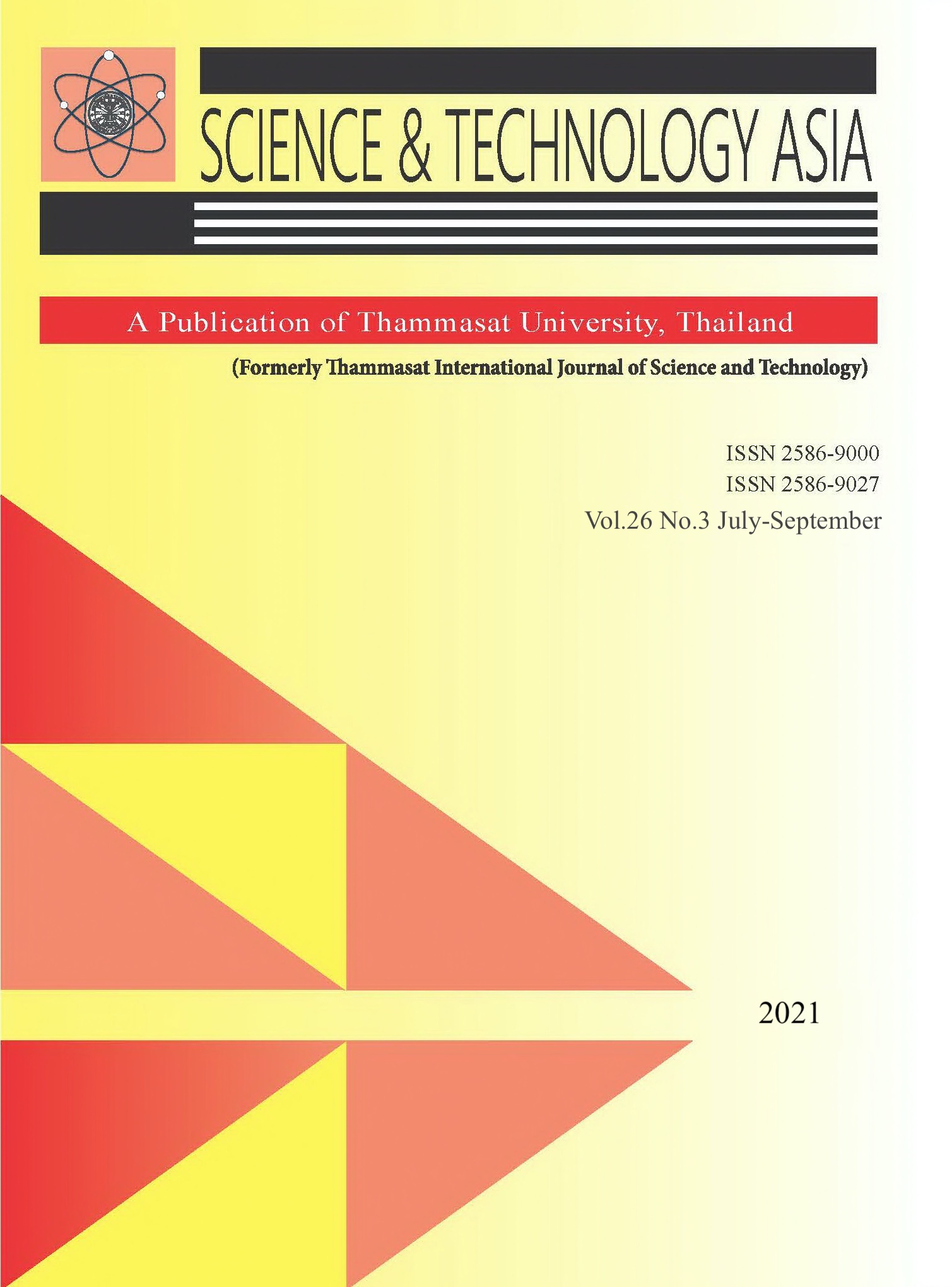Effect of Drying Temperature on the Physical Properties of Binderless Fiberboard from Bagasse: Study of Water Absorption
Main Article Content
Abstract
The objective is to study the utilization of bagasse as fiberboard by relying only on the role of lignocellulose to replace the use of chemical adhesive. Binderless fiberboard was produced through a wet process to enhance hydrogen bonding between celluloses. Various drying temperatures were applied during the pressing process as an independent variable which varied from 110ºC, 130ºC, 150ºC, 170ºC, and 190ºC. The effect of drying temperature on the physical properties of fiberboard, which are water absorption and dimension swelling, was then investigated. The calculations show that the absorption and thickness swelling increased from temperature of 110ºC to 130ºC by 95.23% to 101.02% and by 65.30% to 68.03% respectively and then decreased from temperature of 130ºC to 190ºC by 101.02% to 37.06% and by 68.03% to 22.75%. Meanwhile, the length swelling decreased along with the increase in temperature from 110ºC to 190ºC by 1.97% to 0.83%. As the density of fiberboards is 1.0164-1.0210 g/cm3 included in high-density fiberboard (HDF), the results indicate that none of the fiberboards meet the classification of standard board for HDF with required water absorption below 35% (JIS A 5905 (2003)). Regarding its absorption behavior, the diffusion mechanism on each fiberboard was classified as pseudo-Fickian model with release exponent condition below 0.5. The model indicates that rate water diffusion is much less than polymeric relaxation process.


